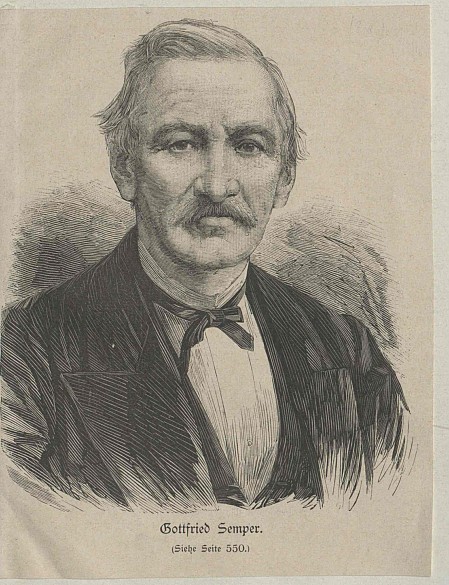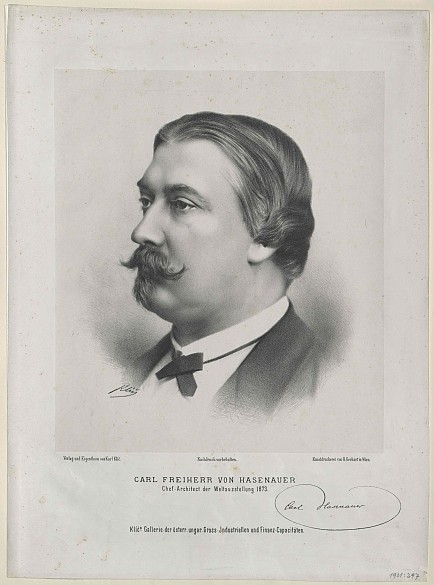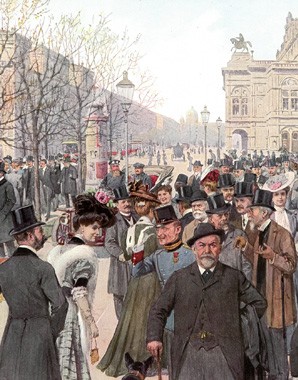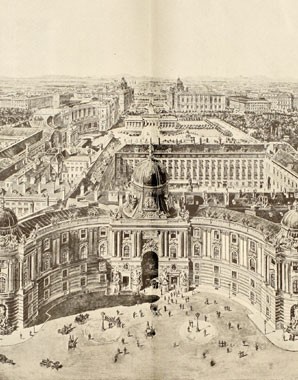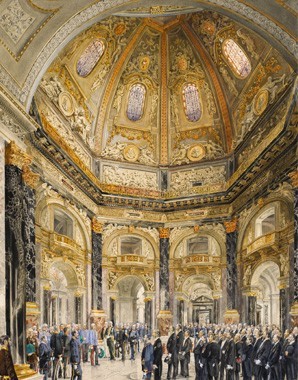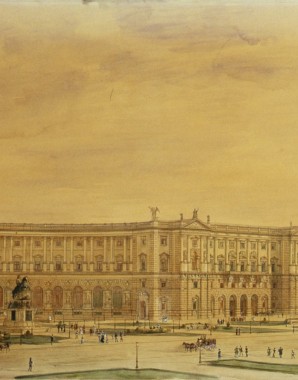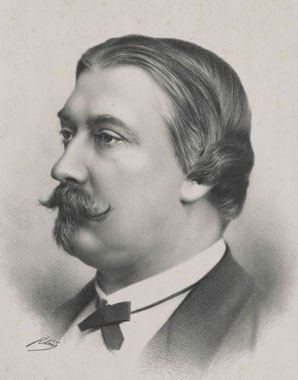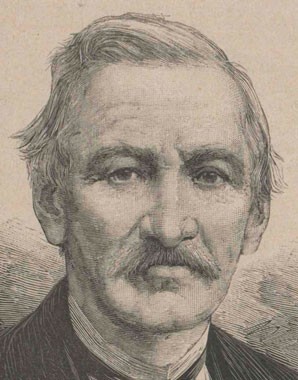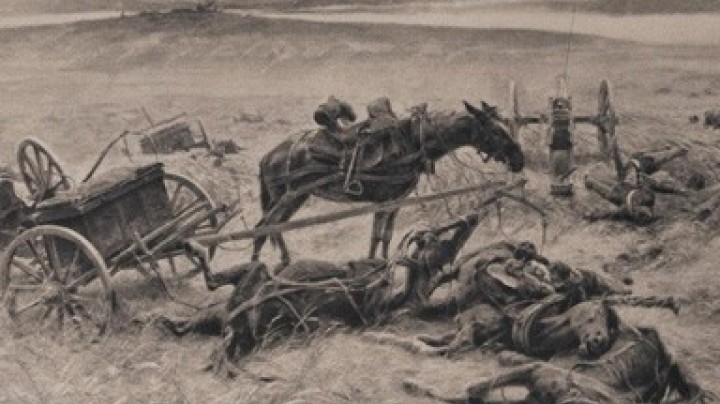The emperor’s architects
An ill-assorted duo of architects has grandiose plans for the new imperial edifices on the Ringstrasse but ends up quarrelling.
As with the City Expansion Plan, a competition was set up to find an architect for the Court Museums. However, this was unsuccessful, as the designs submitted were unworkable. Franz Joseph thus summoned star architect Gottfried Semper to Vienna in 1869, to adjudicate the projects for the Court Museums. The designer of the Dresden Opera, Semper had a turbulent past: in 1849 he had to flee Saxony because of his revolutionary activities – but now, twenty years on, he was designing the residence of the reactionary emperor. He approached the project on a grand scale, turning the project for the Court Museums into one for an imperial forum.
As his partner, the 66-year-old Semper chose the hitherto almost unknown Carl Hasenauer, thirty years his junior, the son of a joiner and a pupil of Sicardsburg and van der Nüll, the architects of the Court Opera on the Ringstrasse. They began work on the execution of Semper’s plans for the Court Museums, the Burgtheater and the Neue Burg.
However, the two architects ended up quarrelling: Semper left Vienna for good in 1876 and died three years later in Rome. Hasenauer saw his chance had come: he completed the buildings designed by Semper, keeping to the latter’s intentions and highly decorative style, but claimed the fame for the designs for himself alone, a claim that was vigorously challenged by Semper’s heirs.
Still unfinished at Hasenauer’s death, the Neue Burg was eventually completed by Ludwig Baumann. He was the favourite architect of Archduke Franz Ferdinand, to whom the emperor had handed over supervision of the project in 1898. Baumann built in the Historicist style and was thus favoured by the imperial dynasty – unlike the ‘innovators’ such as Adolf Loos or Otto Wagner, who were always passed over when bids for imperial projects were issued, as the emperor was suspicious of their ideas.

